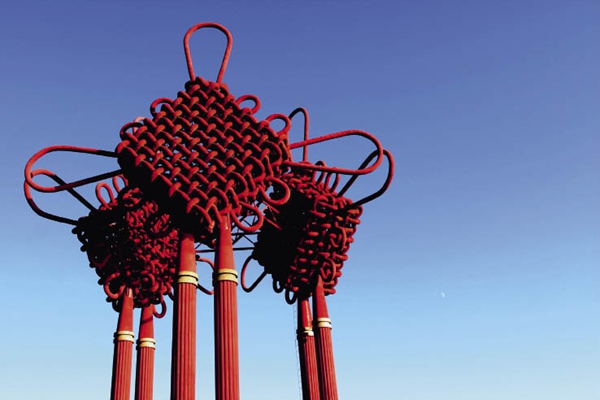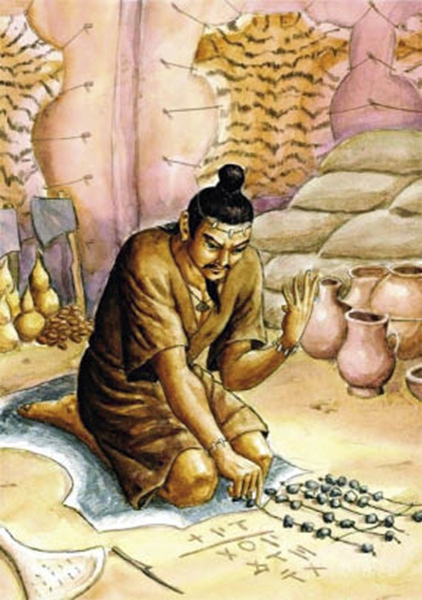By GU HE
By GU HE
THE Chinese knot is a decorative handicraft that is intricately woven with one single colored rope.
Knot tying in China harks back to ancient times. Before Chinese writing appeared, people tied knots to make records of their lives. The size and shape indicated the significance and nature of an event.

A basic design of the Chinese knot.
Knots later became part of clothing. Before the zip was invented and introduced to China, people fastened their robes with ropes. It was the custom to hang a well-fashioned ribbon from the waist belt at the end of which dangled a personal seal. Emperor Wudi (464-549) of the Liang Dynasty (502-557) wrote a love poem mentioning just such a ribbon tied in a “true love” knot. As the name indicates, this pattern of elaborate interconnections represents “the knot which cannot be untied.”
Knotwork reached its pinnacle during the Ming and Qing dynasties (1368-1911). It took various forms, ranging from buttons to pendants on embroidered pouches, jade articles hung from the waistband, combs and hair pins, as well as home decorations.
The Chinese knot is borrowed from the Buddhist icon Eternal Knot, which is symmetrical in all directions, and has no distinction between head and tail. Interlaced and intertwined in different intricate ways, a rope can deliver a kaleidoscopic range of knotworks that resemble ancient coins, the Chinese character for happiness, pipa (a stringed musical instrument), or a bat (this animal is a homophone of “happiness” in Chinese). However complicated the knot might be, it is only formed of one single rope. This corresponds with the Buddhist verse “there could be 10,000 paths leading to the only truth.”
In the Chinese language “knot” is justifiably often associated with “bond.” The character appears in such phrases as “walk in company,” “become sworn brothers,” “make friends,” and “form an alliance.” It is also found in several expressions concerning weddings and marriage. For instance, a traditional term for couples when they first marry is the “couple who have tied their hair together,” which has its origin in the ancient wedding ritual of binding strands of hair from the new husband and wife on the wedding night as a token of lasting union.

Early Chinese tied knots to keep records.
In ancient literature, a knot is a metaphor for despondence and melancholy, usually of a languishing lover. Zhang Xian (990-1078) of the Song Dynasty (960-1279) wrote the famous lines still widely cited today: “Like heaven, which never ages, my love will never fade. Like a net of thousands of knots, my heart twitches and twists.”
The Chinese knot has a myriad of applications in everyday life in China, as conspicuous as wall decorations and as delicate as jewelry. One prominent example is the emblem of the 2008 Beijing Olympic Bid Committee, which depicts a person doing Tai Chi in one continuous line, running in the same way a Chinese knot is tied. During the 2014 APEC meeting in Beijing many variations of the Chinese knot graced the venue and the buttons and brooches on staff uniforms.
The renewed popularity of the Chinese knot in modern times attests to the timeless charisma of this ancient art, as well as that of traditional Chinese culture. The inherent bond with traditional aesthetics is like a seed in the heart of every Chinese person, which may burst into life and blossom at any time.
(Selected from Monthly Digest by Zhonghua Book Company)